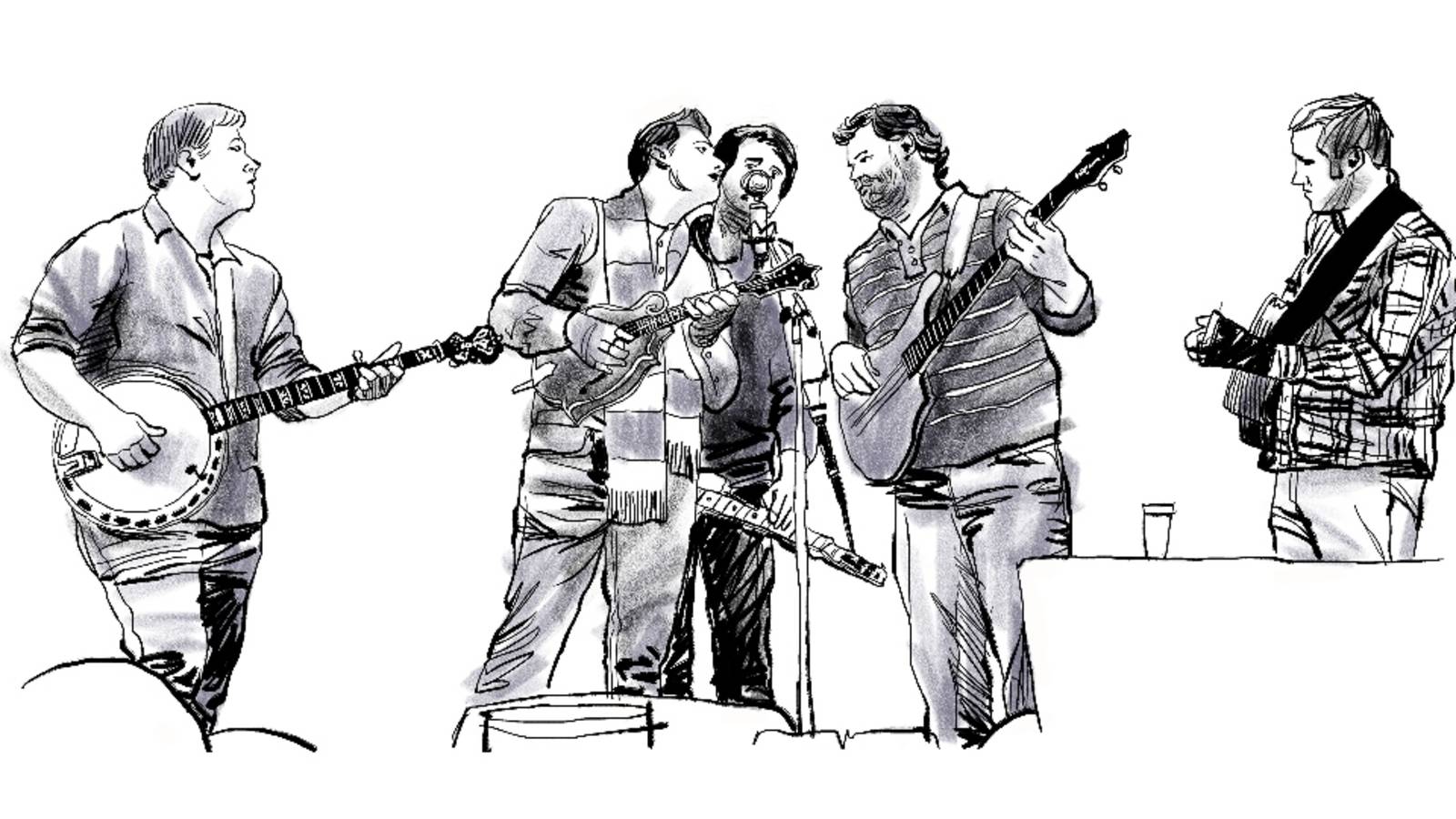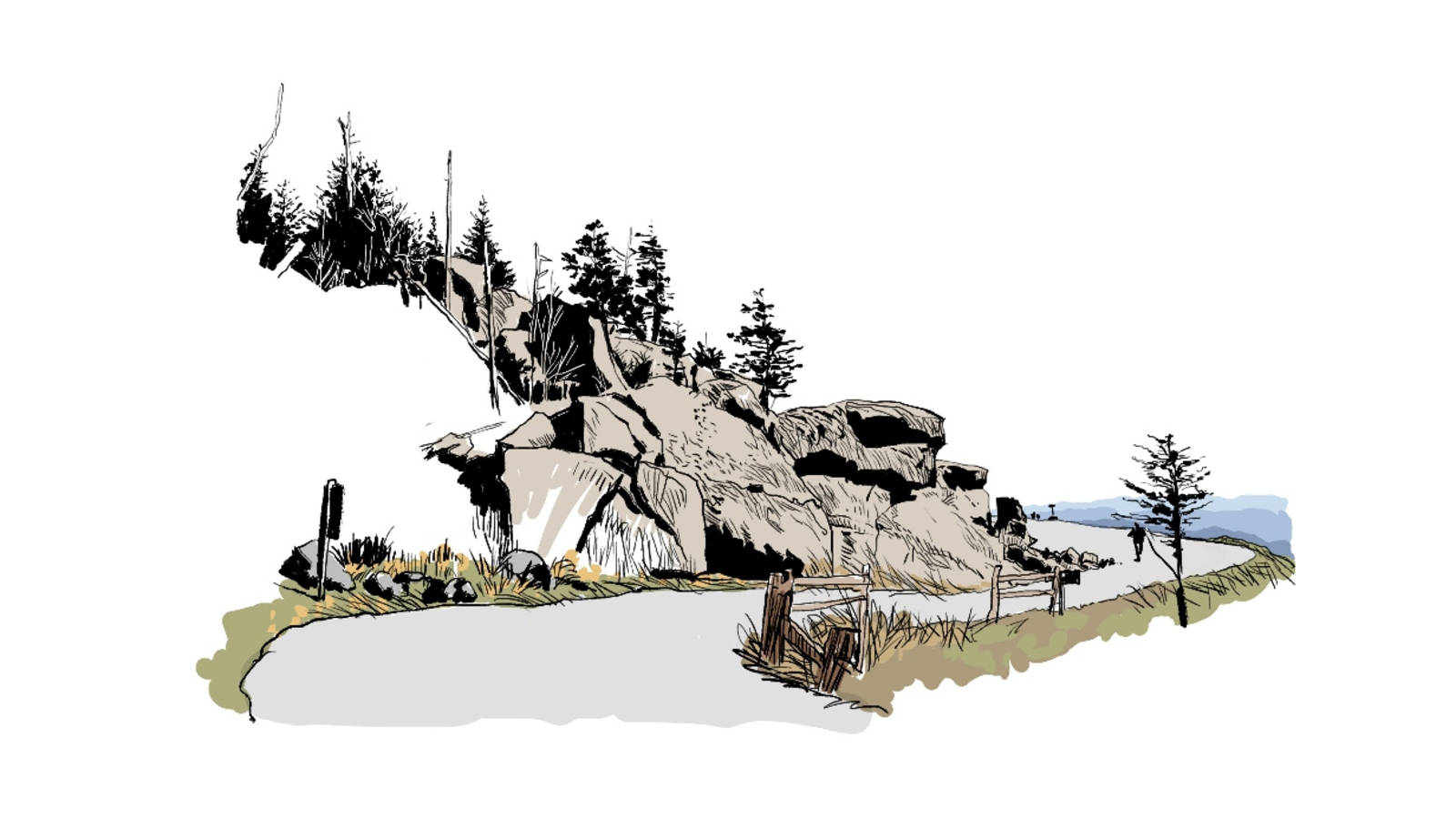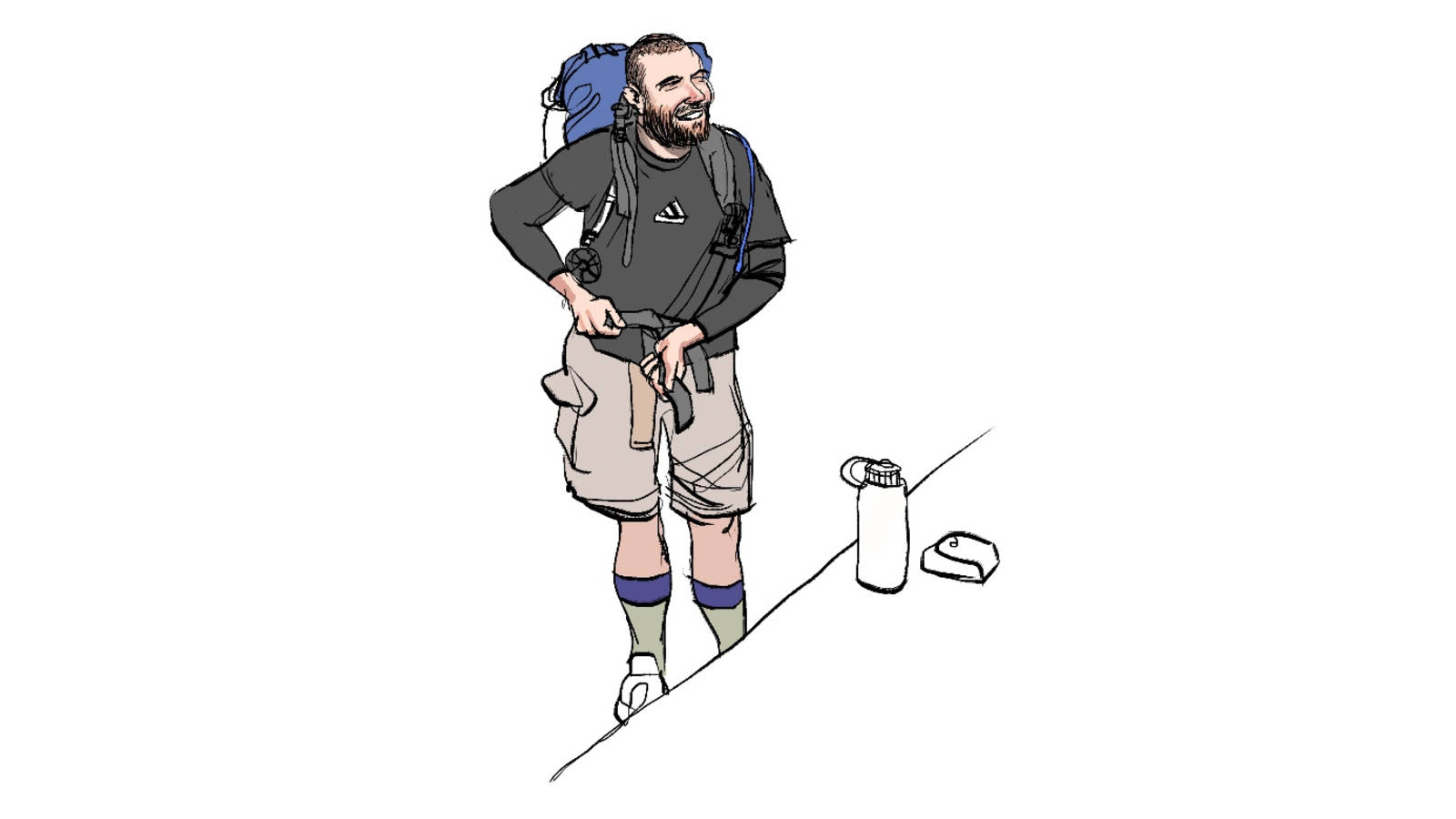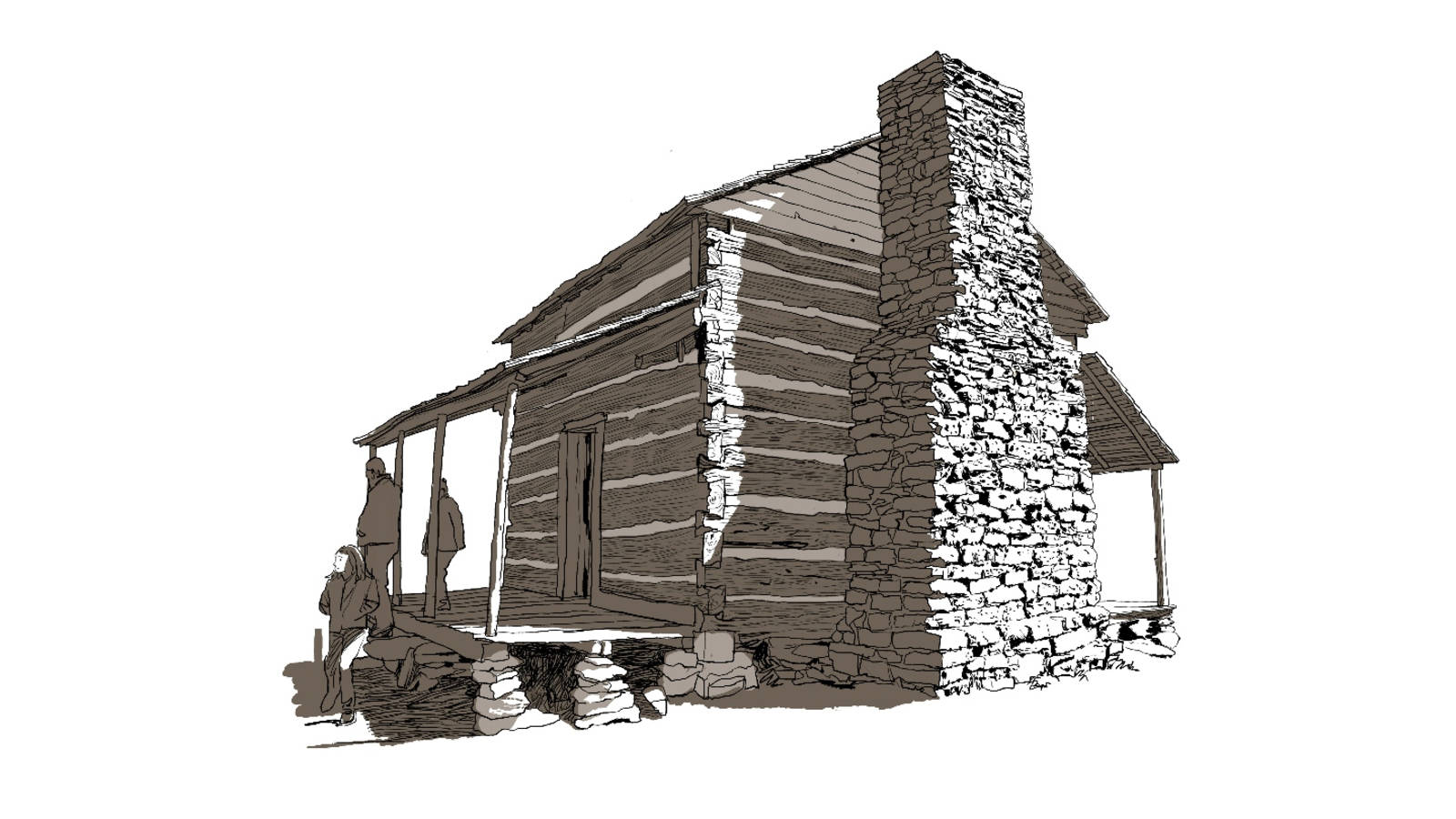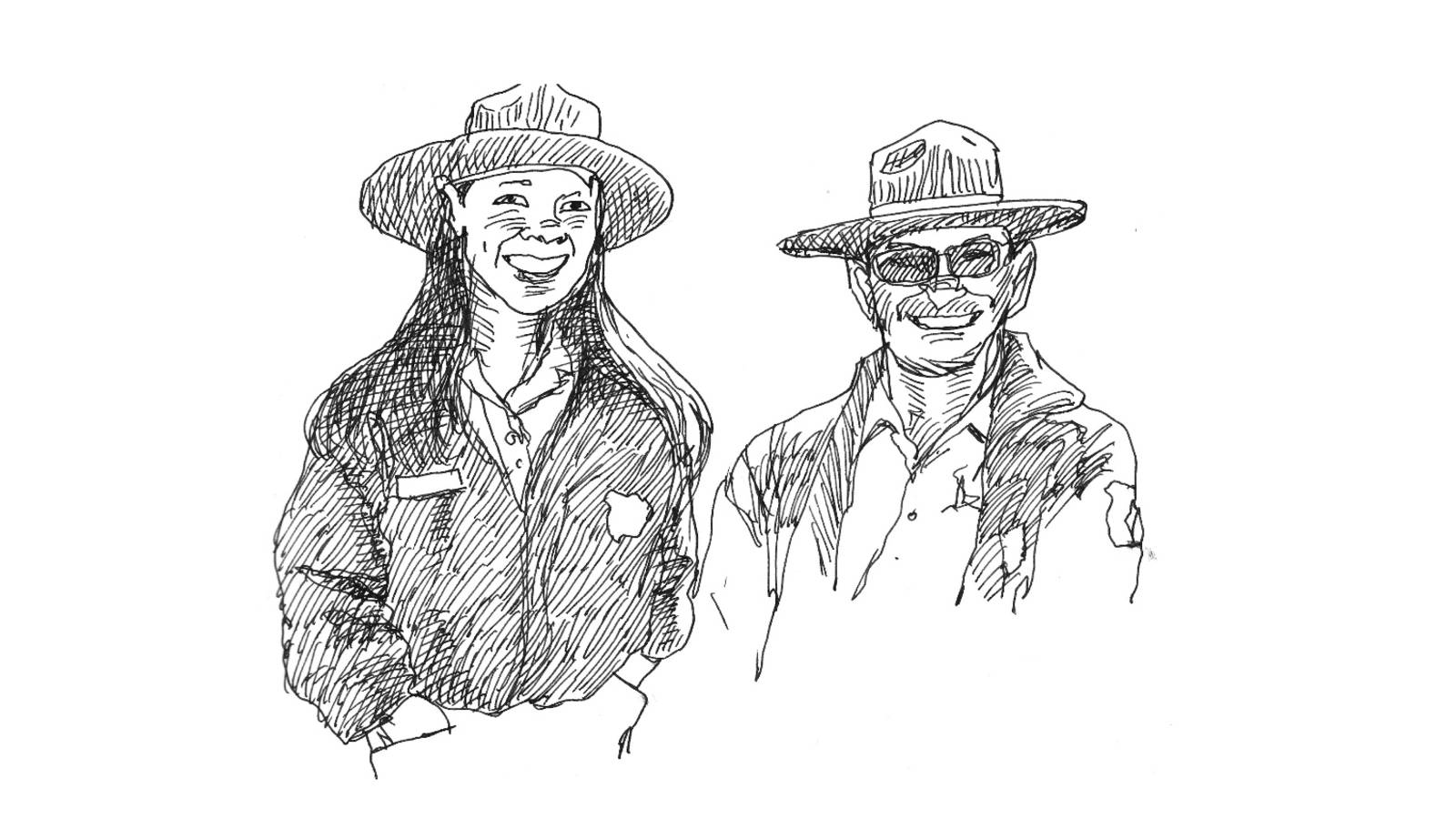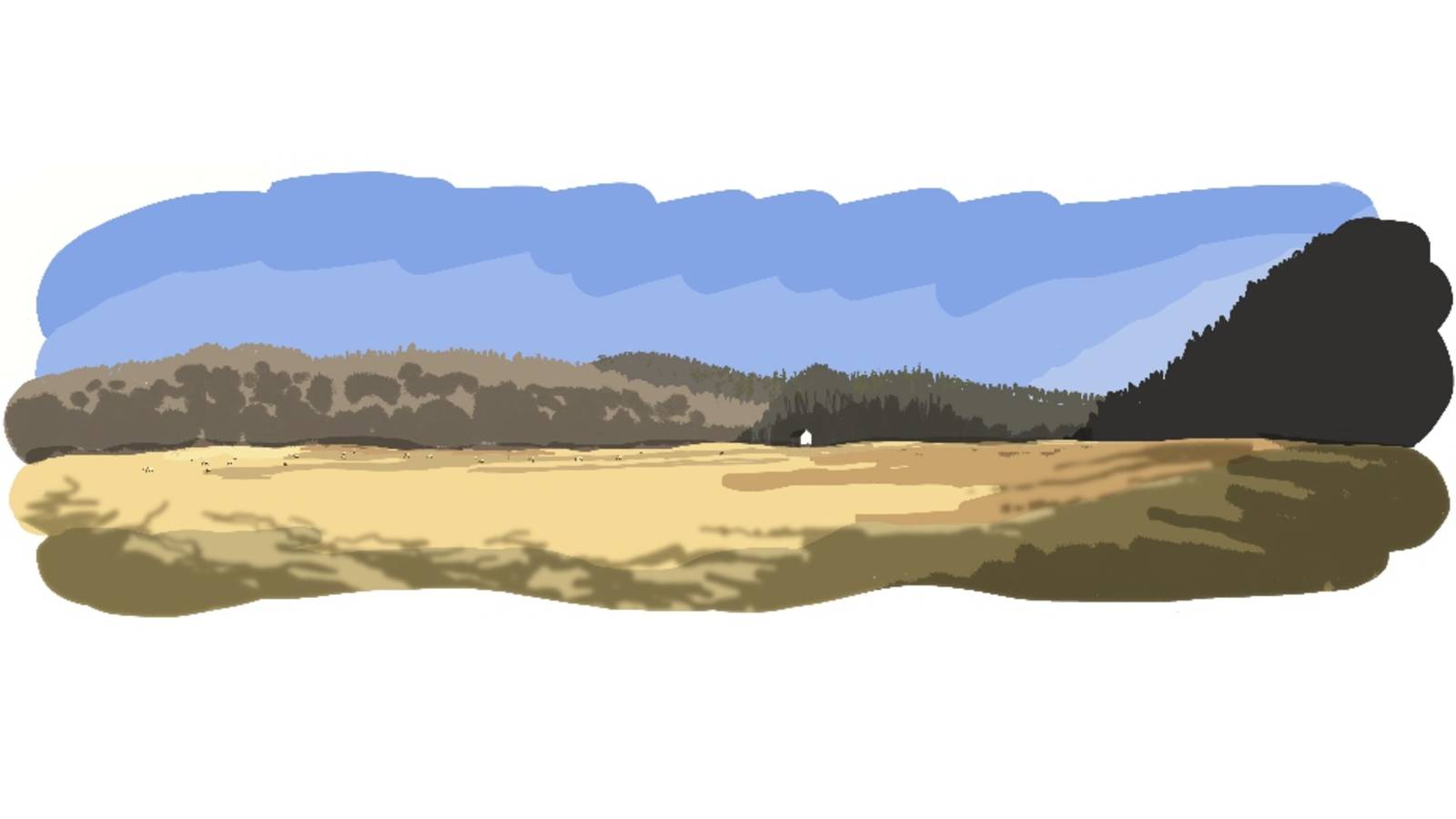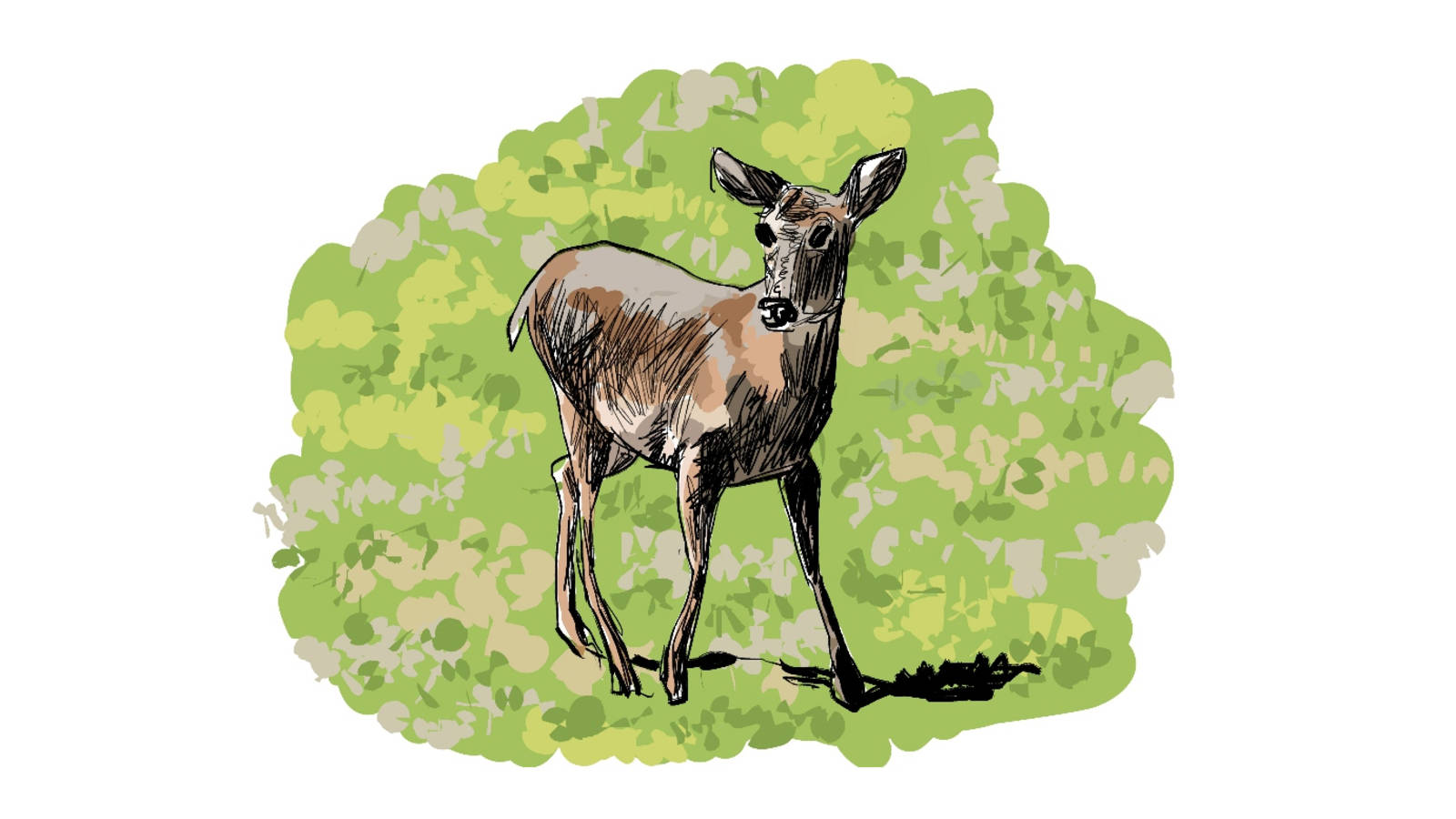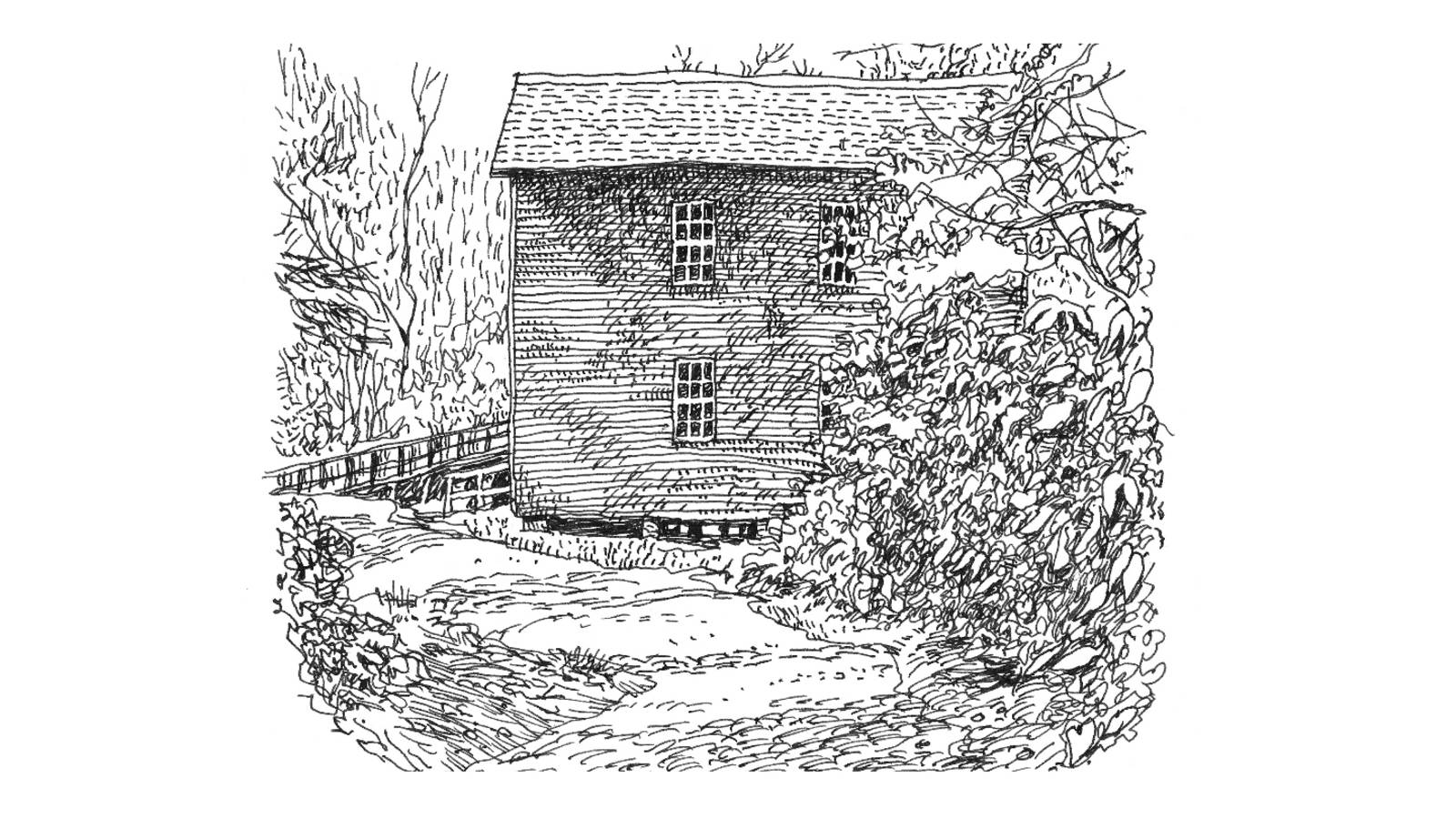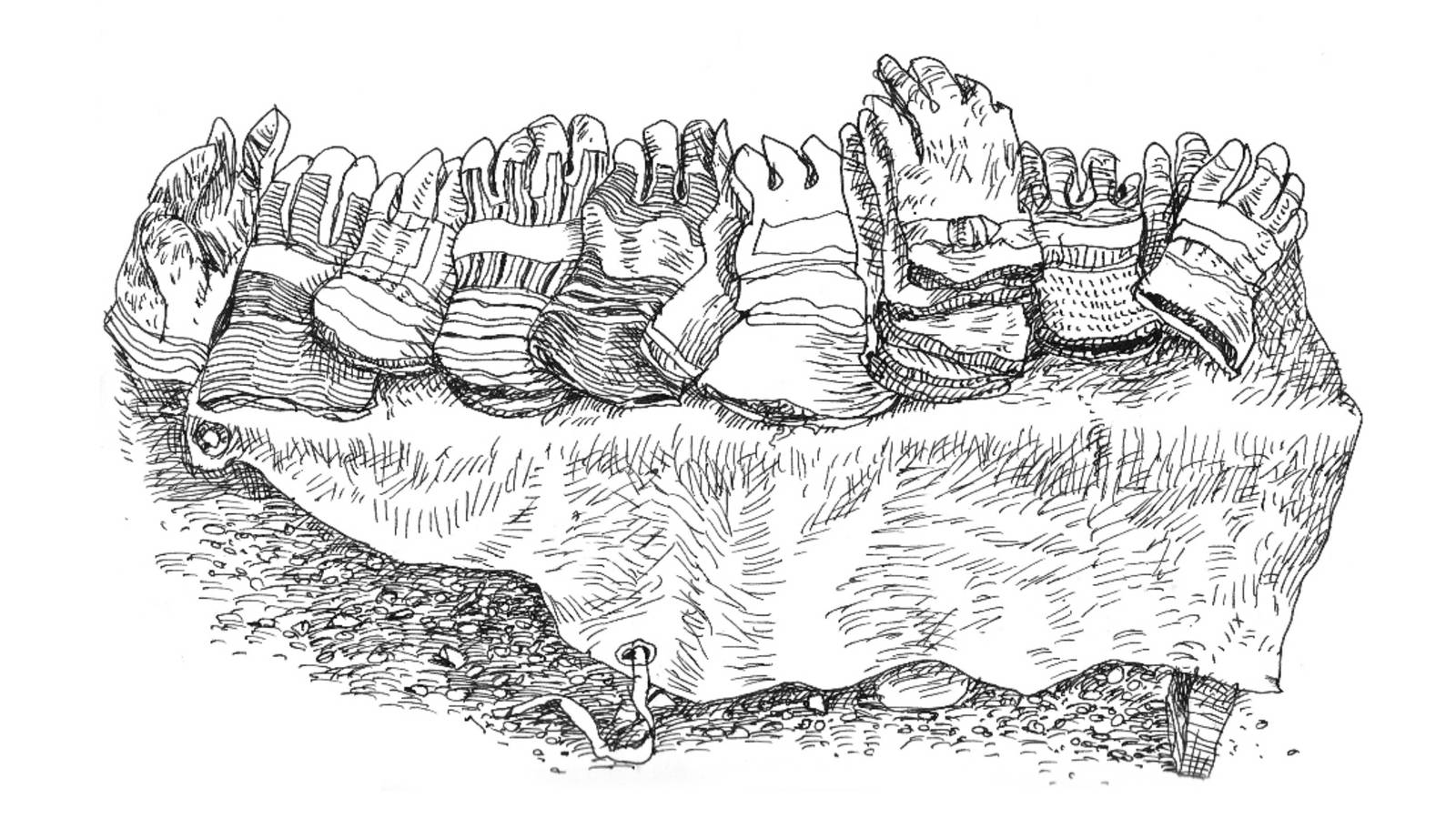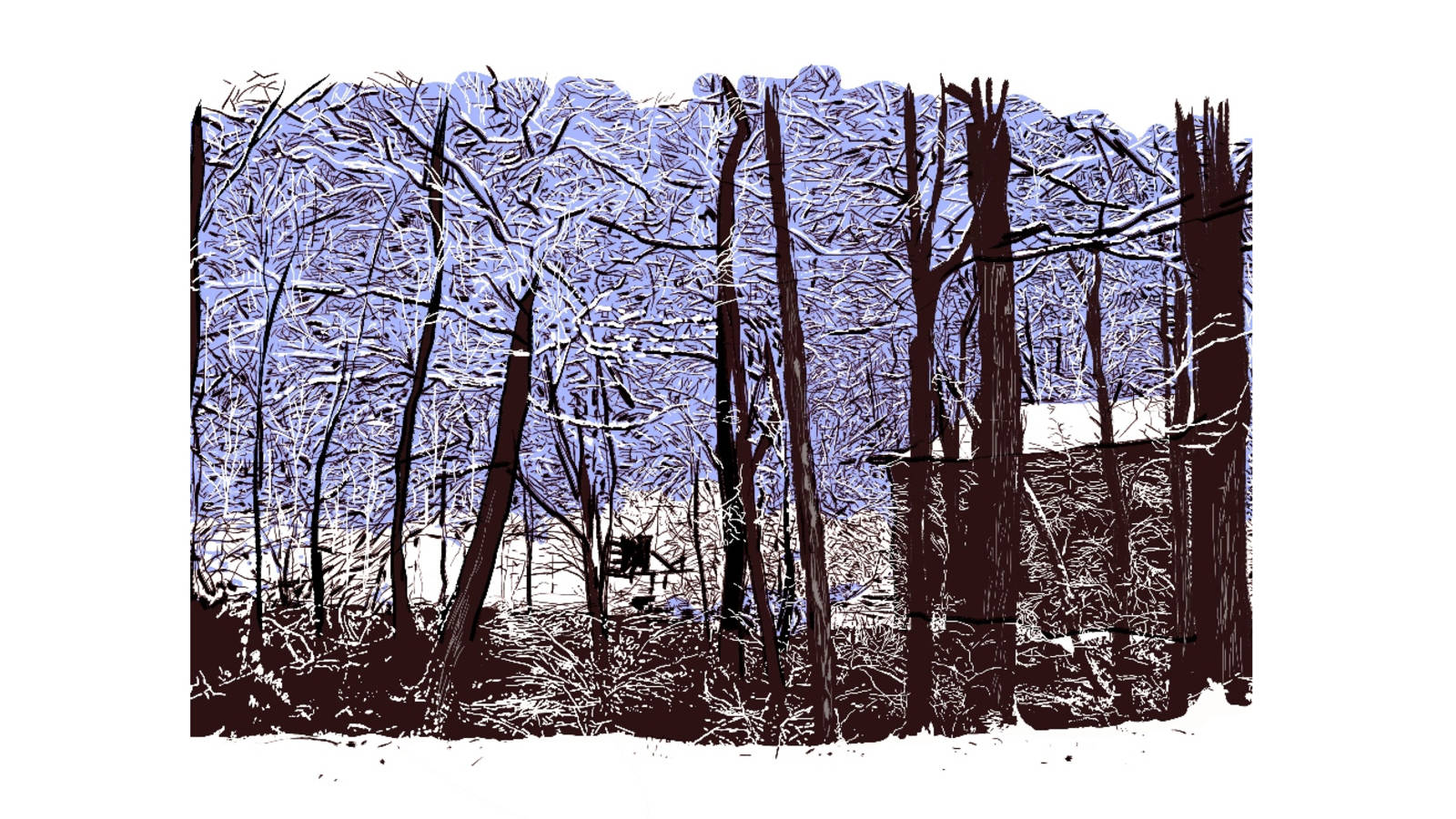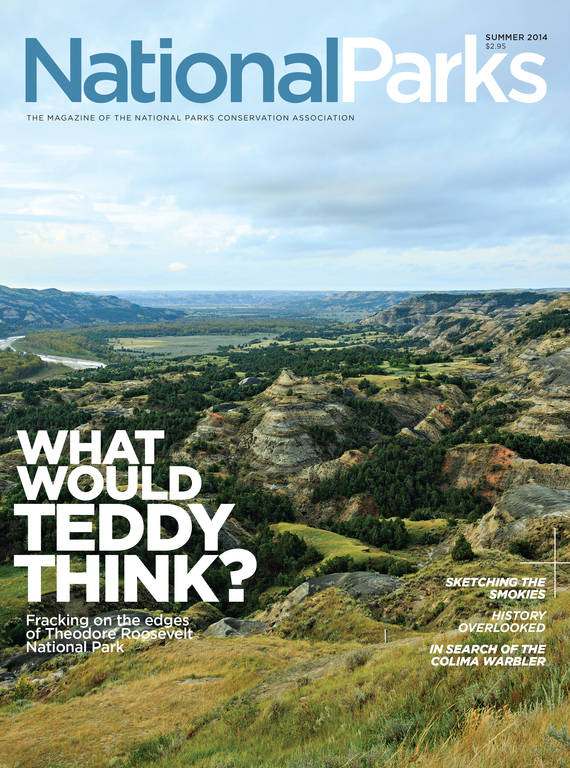Summer 2014
Sketching the Smokies
Walt Taylor heads to the mountains with paper, pens, and paint.
“Why in the world would you want to visit the Smokies in March??”
KUDOS TO WALT
I wasn’t entirely sure how to answer this question, posed by some of my more practical-minded friends. But after a few days, the reasons became abundantly clear. The ability to walk a mountain trail and hear only birds, to contemplate a waterfall in solitude, and to drive the winding roads at your own pace without encountering traffic jams—these are priceless experiences. Great Smoky Mountains National Park is the most heavily visited of all the parks (at right around 9 million annually, as of last count), which means you should be prepared to rub shoulders with your fellow travelers in peak seasons.
Sure, you’re not going to see the colorful spills of laurel and rhododendron or the riotous fall colors, but that just makes you appreciate the shoots and tiny flowers that peep out all the more. Everyone seems to move at a slower pace. And you can stop and talk to a fellow visitor or a ranger and get to know their stories.
And speaking of stories, there’s plenty of time to absorb the histories of the mountain families who are no longer here—to stand in their cabins and imagine their lives, to see where they worked and worshipped, and to contemplate their final resting places. Walking through their lives in comparative solitude, you begin to understand the hard work it took just to survive, and also why it was worth it.
I’ve documented some of the reasons that I’d be happy to return to the Smokies well before the crowds arrive.
Gatlinburg provides a noisy and bustling contrast to the peace and quiet of the park. But sometimes the noise is pleasant indeed. Here, the bluegrass band Monroeville plays an outdoor concert.
The last half mile to Clingman’s Dome, the highest point in the park, is a moderately steep hike. I remember running most of the way when I was 14. I was somewhat slower this time.
This man was hiking the Appalachian Trail. He began a week earlier in Georgia. We asked him what he was subsisting on, imagining meals of wild greens, berries, and roasted chipmunk. “Pop Tarts” he answered.
The John Oliver cabin is thought to be the oldest of the over 80 structures in the park. No frills here: The immense amount of labor required to build the simplest dwelling is there for all to see.
These rangers were playing host to classes of local schoolchildren.
Elk were reintroduced into the park in 2001, and a herd thrives in the remove Cataloochee Valley, whose buildings provide an intriguing peek into the lives of the settlers. It’s reached via a steep and occasionally heart-stopping, often unpaved road over the mountains.
Late March means Spring Break, and the campgrounds were bustling with students from all over, recuperating from lectures and exams.
The park’s broad valleys are home to a variety of wildlife, such as the deer pictured here. Big lesson: Elk are considerably larger than deer. Lesson #2: It’s hard to run fast carrying a sketchbook.
Mills were crucial to mountain communities. This one is just inside the Oconaluftee entrance to the park. Which is where it’s always been. You can move other structures, but you can’t move a mill.
Gloves await the hands of schoolchildren. Will the blacksmith ranger is going to teach them to make a length of chain.
An overnight snowfall completely transforms the scenery.
This family drove all the way from Minnesota just to see Cataract Falls. Okay, they were on their way to Atlanta, but they couldn’t resist an opportunity to drive through Great Smoky Mountains National Park.
TRAVEL ESSENTIALS
The first thing you need to know, and never forget, is that there are no gas stations in the park. Second, the only accommodations are offered by a lodge on top of a mountain, one with no electricity and few amenities, which is accessed only by a rigorous hike. And it’s usually booked way in advance, if you can believe that. For the less adventurous, the towns outside either main entrance provide more than enough of what we modern urbanites have come to expect. From the north and west, Gatlinburg, Tennessee, is the gateway town, and if your cultural tastes run to Moonshine Emporiums and Hillbilly Golf, this is the place for you. If the thought of sharks gliding overhead is your idea of fun, then Ripley’s Aquarium of the Smokies is your El Dorado. Even in early spring, however, you have to do some searching to find last-minute motel vacancies, so plan ahead. Although most of the restaurants are typically tourist-themed, it’s worth seeking out Parton’s Deli, where you can get a decent Reuben sandwich, and where, if you ask the proprietor the inevitable question, “Are you related to Dolly?”, he’ll answer, “Not close enough.” Pigeon Forge, down the road, is a gauntlet of over-the-top shops and attractions, culminating in Dollywood. It’s fun to drive through and gawk at, but expect slow traffic—even in March. You can avoid this avalanche of kitsch by entering the park via Townsend or Cosby.
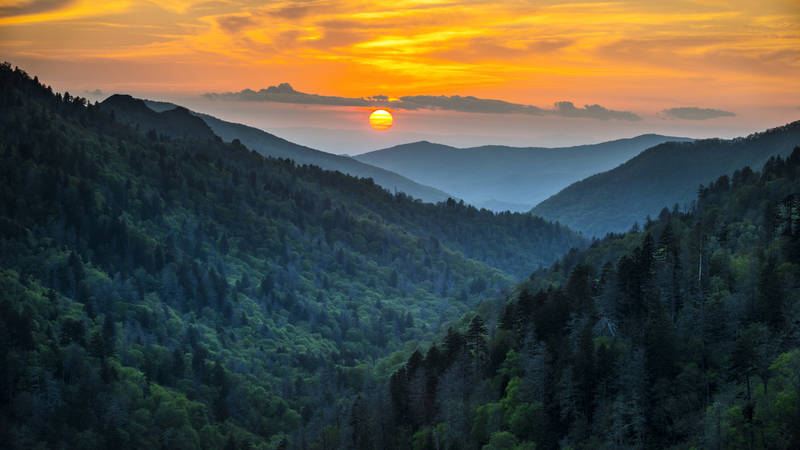
Great Smoky Mountains National Park
Great Smoky Mountains National Park is one of the country’s most popular national park sites. It offers postcard-perfect views and plentiful wildlife.
See more ›If you’re approaching from the east or south, then the Cherokee-Maggie Valley area is where you might want to stay. Cherokee is on an Indian reservation, and it’s dotted with numberless gift shops with names like TeePee and TomTom and Wampum, gathered around the foot of a gigantic, eye-popping Harrah’s Casino. A more leisurely stay can be had down the road in Maggie Valley, with its share of motels, restaurants, and souvenir shops. Although several appealing hotels and motels are there, we opted for a tight-budget place, the Scottish Inn, and it was just fine. It was a little harder finding places to eat there, just before tourist season, but not impossible. If you demand a little more activity, you could commute from Asheville, which is a destination in itself and has plenty of night life.
The park itself has plenty of restrooms at the visitor centers and elsewhere, but if you plan on eating, you’ll need to stock up outside the park. There are several campgrounds; the one we visited, in the Cataloochee Valley, was a pleasant place next to a babbling brook. You’ll soon find that the park is full of babbling brooks. The roads are well kept but full of winding turns and switchbacks; at one point the road to Newfound Gap makes a full loop and passes under itself. The voice on our confused GPS device said “recalculating” at least twice as she struggled to deal with the turnabout. And the following should come as no surprise: Cell phone coverage is unpredictable. Just relax and enjoy being out of touch.
